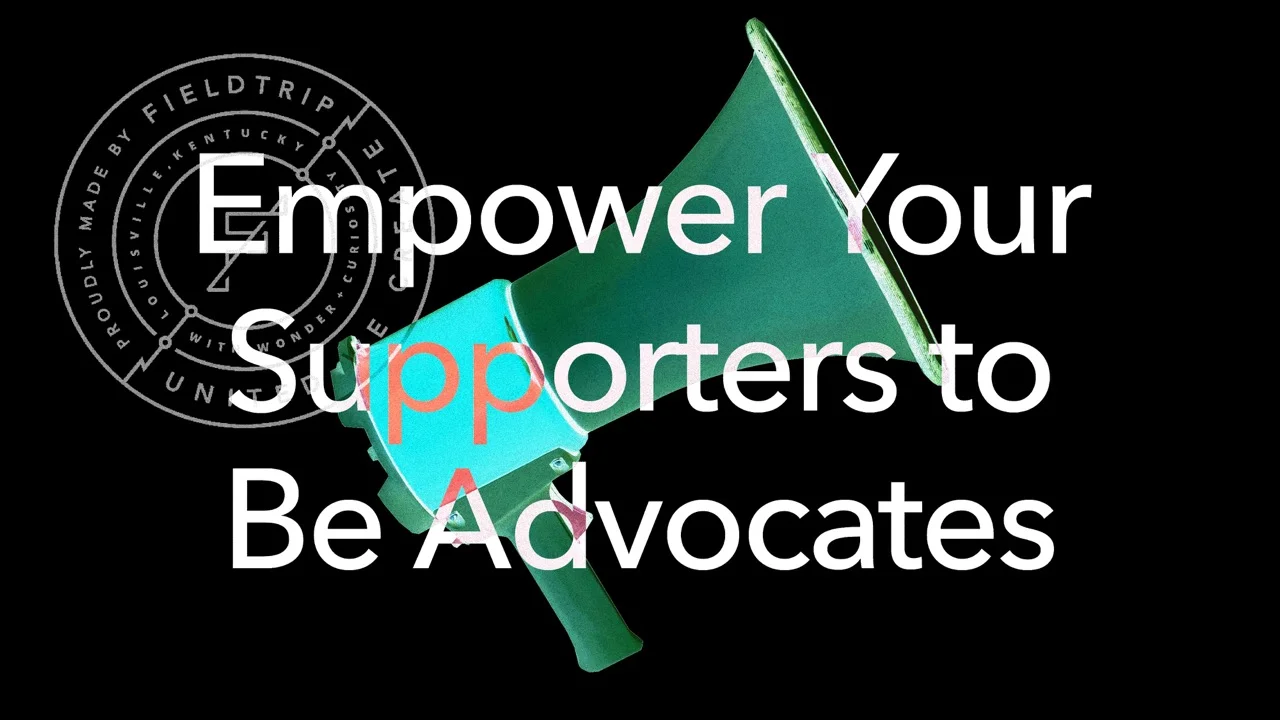Hello, I’m Jane Pfeiffer, founder and president of Fieldtrip. Fieldtrip is a marketing and branding firm dedicated to multiplying the missions of nonprofits and purpose driven organizations by closing the gap between the people that they support, and those that might have the time, money, skills and connections to support the mission. When we close that gap, we create a mission multiplier.
Today we’re going to talk about how you need to fire Cinderella. What do I mean by that? Well, you’ve probably heard this word a lot in your nonprofit expertise. In fact, probably so much so that you’ve tuned it out. I know there’s value, but I tend to get a little irked when I hear the word storytelling, because so often it’s not done well. And we’re going to use Cinderella to illustrate how to use storytelling and the greater impact of doing storytelling with the ripple effect.
Storytelling is an influential part of any communication strategy for a nonprofit. I admit it. It’s great. There’s nothing really wrong with it. It’s just about the margin. To get it right is very narrow. So when these elements are present, it appeals to the emotions and the hearts of the audience. When it positions the beneficiary as the hero, and your organization as the mentor it uses the storytelling arc. So there’s an incident, there’s rising action, there’s the climax, there’s falling action, and then the resolution, it’s a very simple story doesn’t have to be complicated, but that’s the natural rise and fall that we expect in a good story. If the story is well written meaning, the quality of the video, the quality of the photos that go along with it, and if it portrays the beneficiary in a natural and authentic way, these are the elements of a good story. Where storytelling often falls short is the Cinderella story. It’s about how one person goes from rags to riches, and it seems to happen overnight in a very simple way, and all the complexities of before, during and after are missed. And quite frankly, when do any of us experience life that simply? What we do, the work that we do is complicated. Humans are complicated. The whole situation is messy. And the problems that we’re solving include social injustices, racism, inequities. None of that is simple as a misfitting shoe or falling in love. So that’s why the Cinderella story fails.
Here’s what’s missed. One is the depth of the story. We don’t have to share the nitty gritty details, but there’s a risk of oversimplifying. And making it look like one meal equals solving hunger for a person or one home for a month or three months is giving a family a new start. It’s not that simple. The next area in which it fails is that it doesn’t really showcase that your organization’s work is scalable and sustainable. Again, it oversimplifies. And while it demonstrates that, yes, there is an impact to an individual that is good, it falls short of demonstrating the impact that happens to a community because one person is helped. Finally, it assumes that the listener, your audience, is moved by heartwarming stories. Quite frankly, those who aren’t familiar with your work or don’t understand why you need to do what you do, won’t be moved by that Cinderella story.
So let’s play this out in really kind of a ridiculous way. Cinderella in the story was miserable. Now she’s not because she found love and a good pair of shoes and she lives happily ever after. Great. Done. Period. End of story. But now, let’s say in the kingdom, there are many people like Cinderella who are miserable because they’re working hard without recognition, they’re not appreciated, and they have horribly fitting shoes. So once the prince and the royal family discover the benefit of finding love and the right shoes, they realize that everyone in their kingdom deserves these riches. And they go about making sure that everyone has an opportunity to meet the one they love and orders custom fit shoes for everyone in the kingdom. All right, so people are less grumpy, they’re more happy. There’s fewer fights at the market. Kids are playing attention in school, so they’re better educated. And it’s no longer about one person, but it’s about the impact that one person being helped can have on an entire kingdom. Realistic? Maybe not, but it tells the story of one person how your mission helped them, and how that one person can have a tremendous ripple effect in a community and it benefits everyone beyond just that individual.
Okay, so here’s a quick recap of the Cinderella story and then the ripple effect of that story into the story of the kingdom. So for Cinderella, the pros of that story are ones we all know. It positions the beneficiary as the hero. Remember, we, the nonprofit, are not the hero. We are the mentor that helps the heroes. Our beneficiaries are the heroes of our stories. It uses a natural storytelling arc. It focuses on the positive impact of one person’s growth, and it creates an emotional response. These are great things, and yet there are more missed opportunities. So in the Kingdom version, we know that it can use stories that are already collected. You have these stories. It demonstrates the effect of change with one person and how it can impact others their families, their neighbors, their neighborhood, their community, the city, and beyond. It highlights the scale and sustainability of the organization. It focuses on the solution. So it’s not a single meal or a single individual. It’s about the benefit of solving hunger on everyone. And we can customize the story to our audience. Yes, the listener may be moved by that heartwarming story, or they may be inspired just to know that, hey, the royal family now has this bigger understanding, or it may take the hard facts and figures of the economic and educational impact of everyone having well-fitting shoes. You now have chapters and varied outcomes that can be selected to fit your audience. And on the cons side, the story of an individual, Cinderella, well, it may not be told well, or it may be a one time event. And it’s not typical of what happens every day in your organization. Plus it’s also highly personal content. It’s not our story to tell. Now, granted, we would get permission, but will that person be comfortable in three years or five months that that story is still being told? We can’t assume that we always have to double down and make sure that we have their permission to share. And quite frankly, that person, especially if they’re unfamiliar or uninformed and may not be related, may not consider that story as relatable. So you’ve lost their attention. And really the only con to mapping out the Kingdom story is that it takes more time. You have to have data and you have to have the resources and skills to know how to analyze that data and tell it in a way that is meaningful and be able to choose which outcome, which story ending is appropriate for the audience in front of you. So remember, it’s not about the Cinderella story. It’s about telling the tale of the kingdom that grew happier and more prosperous simply by allowing one person to make a significant change and apply that change in an exponential fashion. So thanks for watching and for more videos, visit wearefieldtrip.com/nonprofits.



